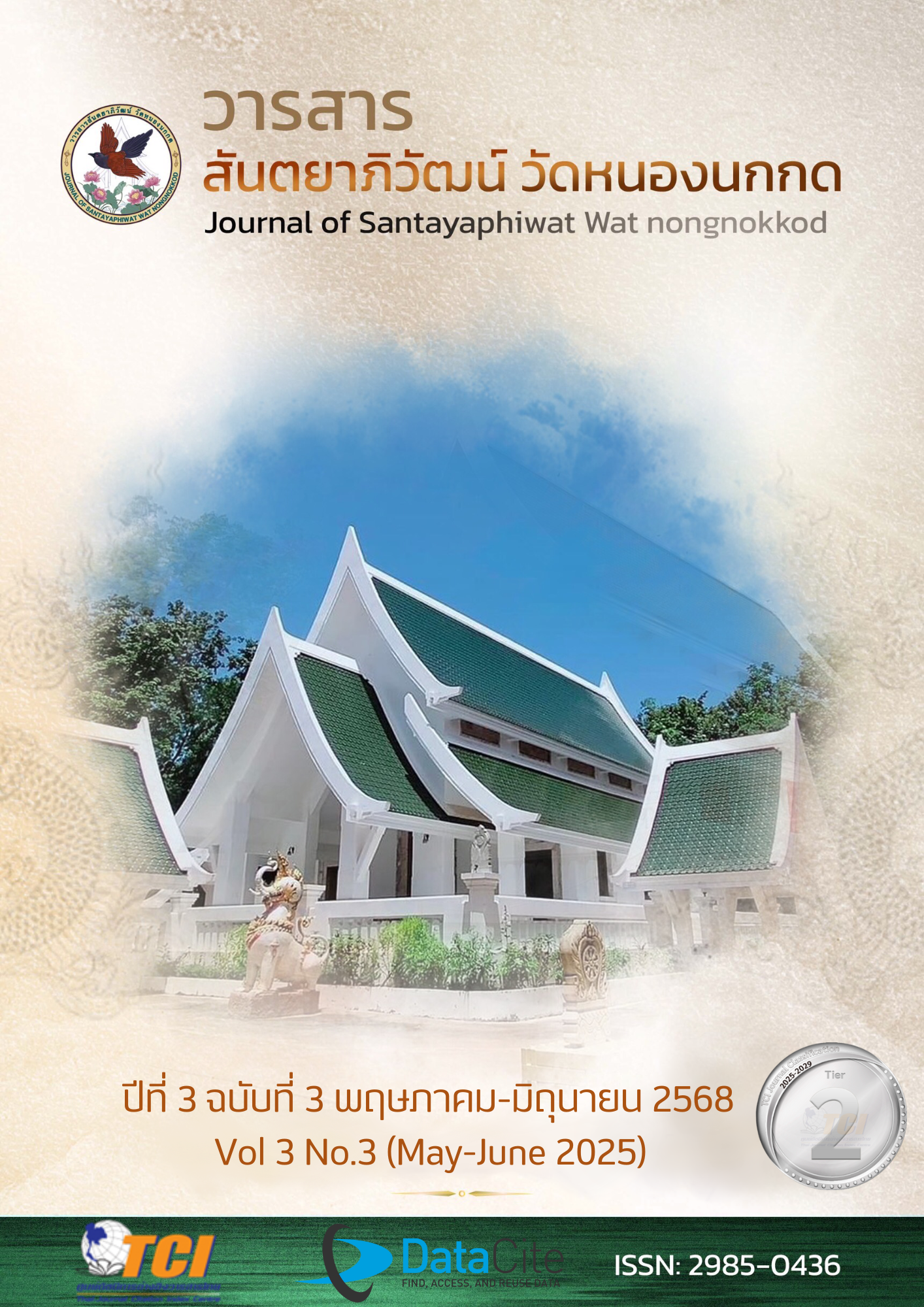THAM NAKHA: THE LEGEND OF THE NAGA CITY IN PHU LANGKA NATIONAL PARK
Keywords:
Naga Cave, Belief, People, Local, PhulangkaAbstract
This academic article will present the knowledge and beliefs of local people towards Tham Nakha in Phu Langka National Park. Local people’s beliefs: The villagers believe that the Naga or giant snake has been cursed to turn into stone because the followers of the Naga who ruled the underworld had sexual relations with humans. The underworld where the Naga lived was Bueng Khong Long. According to the legend, in the past, Pu U Lue was a god in heaven. He was then cursed to become a Naga who ruled the underworld at Bueng Khong Long, where both Naga and humans lived. Later, the people in the underworld, both humans and Naga, became lustful and had sex with each other. When Pu U Lue, the Naga, found out about this, he was angry at his followers who fell in love with humans. He cursed his followers to turn into stone in the cave. The cursed followers are all over the city and in many places to protect humans. Later, it became a sacred place that people love. The wonder of Tham Nakha is that the walls inside the cave are shaped like the scales of a Naga curled up. It is a large brown rock with scales and a shape similar to the head of a Naga. It is a popular spot for tourists to come and worship to ask for luck and fortune to enhance their lives. Therefore, locals and tourists come to admire the wonders of this Naga cave.
References
เดลินิวส์ออนไลน์. (2564). เปิด “7 ตำนานลี้ลับ” ความเชื่อมหัศจรรย์แห่ง “ถ้ำนาคา-ภูลังกา”. เรียกใช้เมื่อ 18 กันยายน 2567 จาก https://www.dailynews.co.th/news/488340/.
นรเศรษฐ์. (2548). ความลี้ลับของพญานาค อาถรรพณ์พิศวง ณ เมืองลับแล ที่ได้สัมผัสในโลกแห่งความเป็นจริง! จากประสบการณ์จริง!. กรุงเทพฯ: ไพลิน.
ประชาชาติธุรกิจออนไลน์. (2565). ถ้ำนาคา : ความศักดิ์สิทธิ์ วิธีเดินทาง ข้อห้าม เวลาที่ควรไหว้รวมเรื่องควรรู้. เรียกใช้เมื่อ 18 กันยายน 2567 จาก https://www.prachachat.net/tourism/news-859381.
พระณัฐวุฒิ พันทะลี. (2566). ผีดอนปูตา : ความเชื่อความศรัทธาต่อสิ่งศักดิ์สิทธิ์ในสังคมอีสาน. วารสารวิชาการพระพุทธศาสนาเขตลุ่มแม่น้ำโขง, 6(1), 1-20.
พระณัฐวุฒิ พันทะลีและคณะ. (2565). พญานาค : ความเชื่อของคนในสังคมอีสานเขตลุ่มน้ำโขง. วารสารวิชาการพระพุทธศาสนาเขตลุ่มแม่น้ำโขง, 5(2), 32-47.
พิพัฒน์พงศ์ พรมจันทร์. (2565). หลวงปู่อือลือ เกาะดอนโพธิ์ บึงโขงหลง บึงกาฬ. เรียกใช้เมื่อ 18 กันยายน 2567 จาก https://www.wongnai.com/reviews/ad79a6af7dd840899e8b2e0324758928?ref=ct.
ยุพารักษ์ ชนะบวรวัฒน์. (2560). การบนสิ่งศักดิ์สิทธิ์ของชาวพุทธในสังคมไทย. ใน ปริญญาศิลปศาสตรมหาบัณฑิต สาขาวิชาพุทธศาสนศึกษา. มหาวิทยาลัยธรรมศาสตร์.
วรชาติ โตแก้ว. (2558). การสํารวจเบื้องต้นของพืชล้มลุกกลุ่มกลีบดอกเชื่อมกันในอุทยานแห่งชาติภูลังกาจังหวัดนครพนม. วารสารมหาวิทยาลัยราชภัฏสกลนคร, 7(13), 79-88.
เว็บออนไลน์ Skstamp.Trip. (2566). ที่สุดแห่งศรัทธา “ถ้ำนาคา” เมืองพญานาค จังหวัดบึงกาฬ. เรียกใช้เมื่อ 18 กันยายน 2567 จาก https://th.trip.com/hot/articles/AC.html.
สฤษดิ์ ติยะวงศ์สุวรรณและคณะ. (2557). ศักยภาพเชิงพื้นที่เพื่อการพัฒนาจังหวัดอย่างบูรณาการกรณีศึกษาจังหวัดบึงกาฬ. วารสารวิชาการคณะสถาปัตยกรรมศาสตร์ มหาวิทยาลัยศิลปากร, 28(1), 299-320.
อุทยานแห่งชาติภูลังกา. (2563). ถ้ำนาคา-อุทยานแห่งชาติภูลังกา. เรียกใช้เมื่อ 18 กันยายน 2567 จาก https://portal.dnp.go.th/Content/nationalpark?contentId=26481








